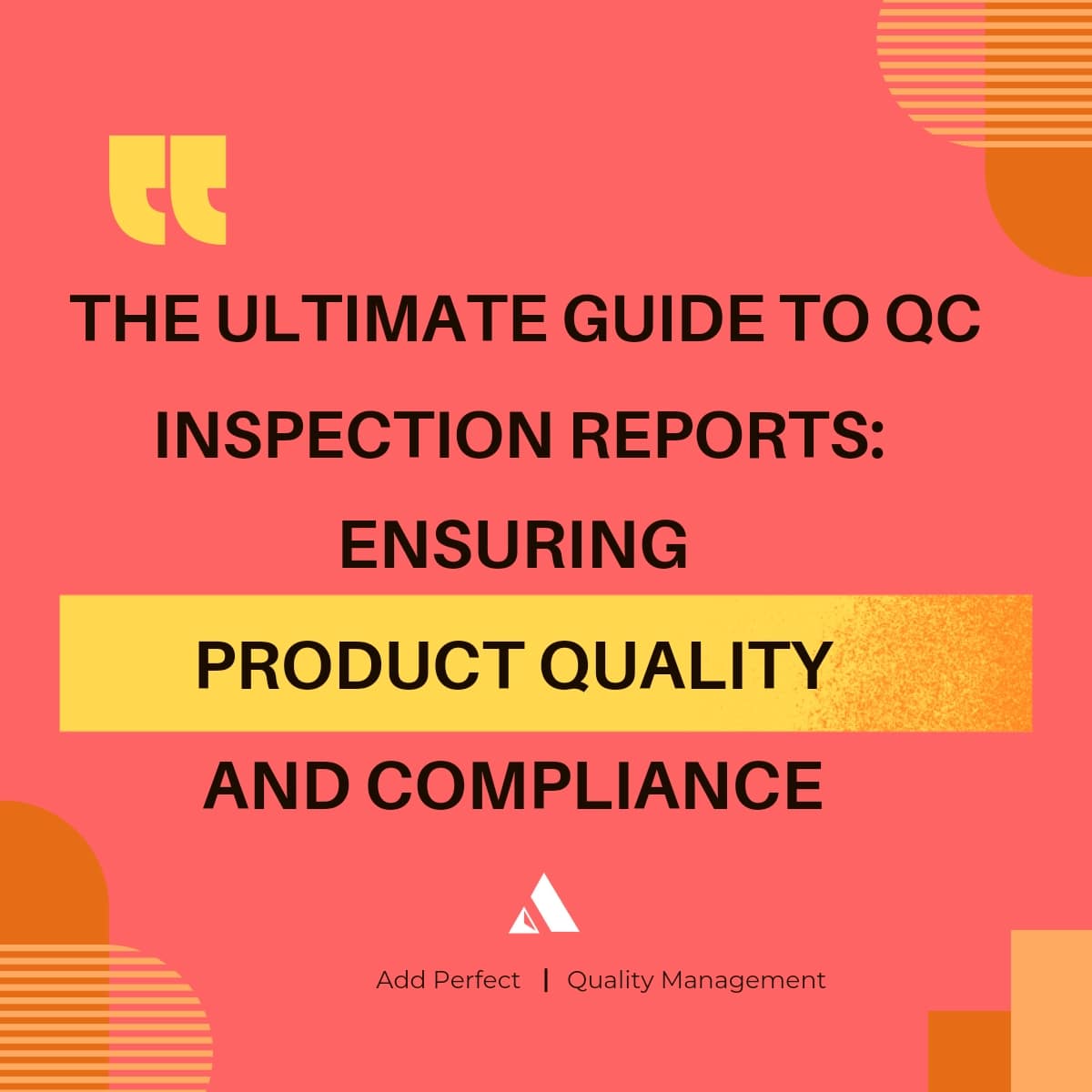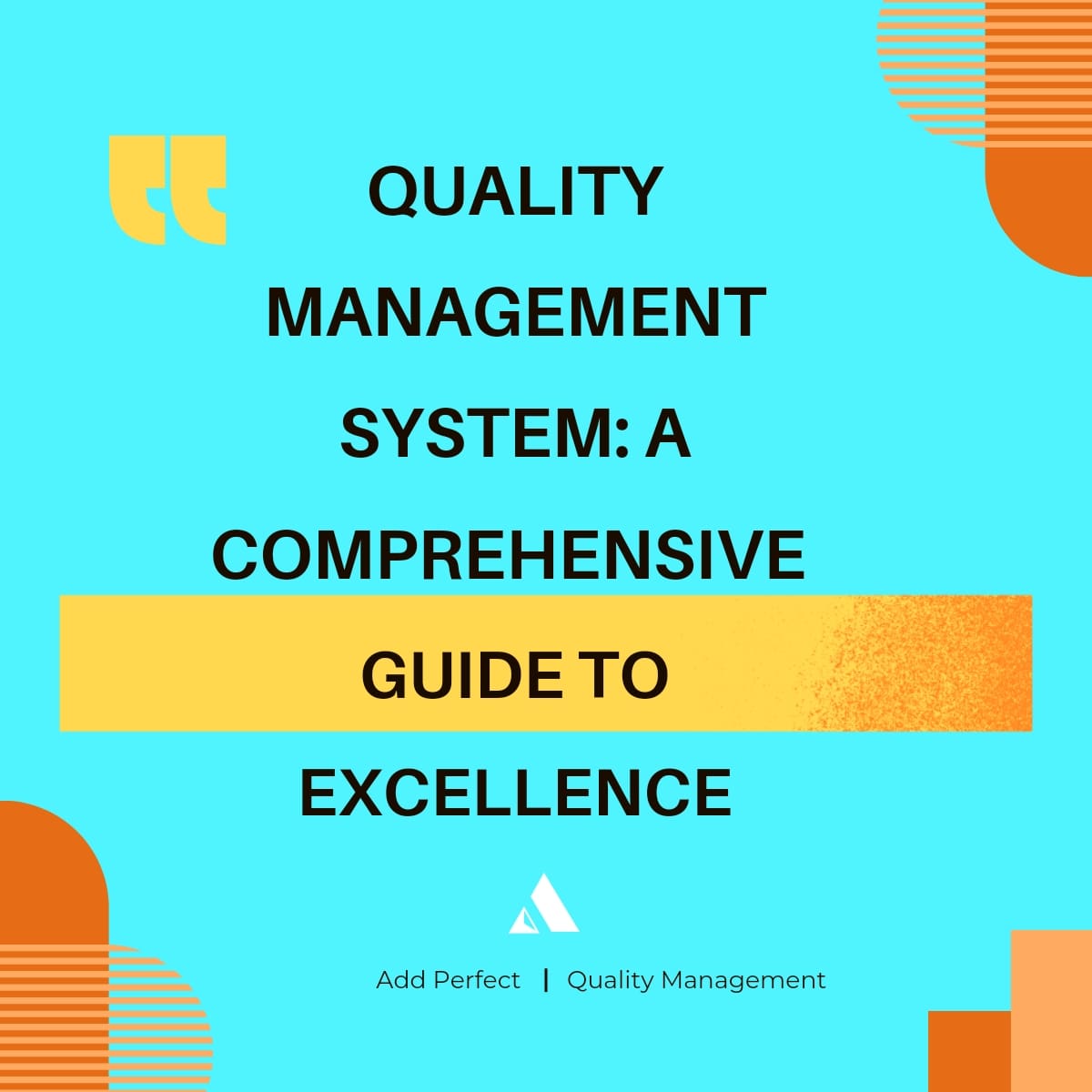Learn the importance of QC inspection reports in maintaining product quality and compliance. Discover the key elements, benefits, and best practices for creating effective QC inspection reports.

Introduction
In the realm of quality management, QC inspection reports play a vital role in ensuring that products meet specified standards and regulatory requirements. These reports are essential tools for documenting the inspection process, identifying defects, and ensuring compliance. This comprehensive guide explores the importance of QC inspection reports, their key elements, benefits, and best practices, providing a thorough understanding for businesses aiming to excel in quality control.
What is a QC Inspection Report?
A QC inspection report is a detailed document that records the findings of quality control inspections. It includes information about the product, inspection criteria, results, and any non-conformities identified during the inspection process. QC inspection reports are crucial for tracking product quality and ensuring that products meet the required standards.
Importance of QC Inspection Reports
The significance of QC inspection reports in maintaining product quality and compliance can be outlined as follows:
| Aspect | Description |
|---|---|
| Quality Assurance | Ensures products meet specified quality standards. |
| Regulatory Compliance | Verifies adherence to industry regulations and legal requirements. |
| Documentation | Provides a detailed record of the inspection process and findings. |
| Continuous Improvement | Identifies areas for improvement, facilitating ongoing quality enhancement. |
Benefits of QC Inspection Reports
Implementing effective QC inspection reports offers numerous benefits, including:
| Benefit | Description |
|---|---|
| Enhanced Product Quality | Ensures consistent production of high-quality products. |
| Transparency | Provides clear and detailed documentation of inspection processes and results. |
| Customer Satisfaction | Builds customer trust through reliable quality control practices. |
| Compliance Assurance | Confirms adherence to regulatory standards, avoiding legal issues and penalties. |
Key Elements of a QC Inspection Report
A comprehensive QC inspection report should include the following key elements:
1. Product Information
Details about the product being inspected.
| Element | Description |
|---|---|
| Product Name | The name of the product being inspected. |
| Product Code | Unique identifier or code assigned to the product. |
| Batch/Lot Number | The batch or lot number of the product. |
2. Inspection Criteria
The standards and criteria against which the product is inspected.
| Element | Description |
|---|---|
| Inspection Standards | The specific standards and regulations the product must meet. |
| Inspection Methods | The methods and techniques used to inspect the product. |
3. Inspection Results
The findings of the inspection process.
| Element | Description |
|---|---|
| Defects Identified | A detailed description of any defects found during the inspection. |
| Non-Conformities | Any deviations from the specified standards. |
| Inspection Status | The overall status of the inspection (e.g., pass, fail). |
4. Corrective Actions
Actions taken to address any identified defects or non-conformities.
| Element | Description |
|---|---|
| Corrective Measures | Specific actions taken to correct identified issues. |
| Responsible Parties | Individuals or teams responsible for implementing corrective actions. |
| Timeline | The timeframe within which corrective actions must be completed. |
5. Inspector Information
Details about the inspector(s) conducting the inspection.
| Element | Description |
|---|---|
| Inspector Name | The name of the inspector conducting the inspection. |
| Inspector ID | Unique identifier or ID assigned to the inspector. |
| Inspection Date | The date on which the inspection was conducted. |
The QC Inspection Report Process
Creating a QC inspection report involves several key steps to ensure thorough documentation and quality control:
1. Planning the Inspection
Planning is the first step in the QC inspection report process, where objectives, scope, and criteria are defined.
| Activity | Description |
|---|---|
| Defining Objectives | Setting clear goals and objectives for the inspection. |
| Establishing Scope | Determining the areas, processes, and products to be inspected. |
| Criteria and Standards | Identifying the standards and criteria against which the inspection will be conducted. |
2. Conducting the Inspection
Conducting the inspection involves systematic examination and evaluation of products.
| Activity | Description |
|---|---|
| Data Collection | Gathering relevant data and information through observations, measurements, and tests. |
| Evaluation and Analysis | Assessing the collected data against predefined criteria and standards. |
| Identifying Defects | Detecting any defects or non-conformities in the products. |
3. Reporting and Documentation
After the inspection, findings are documented, and a comprehensive QC inspection report is prepared.
| Activity | Description |
|---|---|
| Inspection Report | Documenting findings, including defects, non-conformities, and recommendations. |
| Corrective Action Plan | Developing a plan to address identified issues and improve product quality. |
4. Follow-Up and Continuous Improvement
Post-inspection activities ensure that corrective actions are implemented and monitored for effectiveness.
| Activity | Description |
|---|---|
| Implementing Actions | Taking corrective actions to address identified defects. |
| Monitoring and Review | Continuously monitoring products to ensure sustained improvements. |
| Re-Inspection | Conducting follow-up inspections to verify the effectiveness of corrective actions. |
Types of QC Inspection Reports
QC inspection reports can be categorized into different types based on their focus and objectives:
| Type of Report | Description |
|---|---|
| Pre-Production Reports | Document inspections conducted before production begins. |
| In-Process Reports | Record inspections conducted during the production process. |
| Final Inspection Reports | Summarize inspections conducted on finished products before delivery. |
| Special Inspection Reports | Focus on specific aspects or issues, such as safety or compliance. |
Best Practices for QC Inspection Reports
To ensure the effectiveness of QC inspection reports, organizations should follow these best practices:
| Best Practice | Description |
|---|---|
| Clear Communication | Maintaining transparent communication throughout the inspection process. |
| Detailed Documentation | Ensuring thorough and accurate documentation of inspection findings and actions. |
| Regular Training | Providing regular training to staff on quality standards and inspection procedures. |
| Continuous Auditing | Conducting regular audits to ensure ongoing compliance and quality improvement. |
| Stakeholder Involvement | Involving relevant stakeholders in the inspection process for comprehensive insights. |
Challenges in QC Inspection Reports
Creating and implementing QC inspection reports can present several challenges:
| Challenge | Description |
|---|---|
| Resource Constraints | Limited availability of skilled inspectors and resources. |
| Data Accuracy | Ensuring the accuracy and reliability of collected data. |
| Complex Regulations | Navigating complex and evolving regulatory requirements. |
| Resistance to Change | Employee resistance to new inspection processes and standards. |
Overcoming Challenges
Effective strategies to overcome these challenges include:
| Strategy | Description |
|---|---|
| Leadership Support | Gaining strong leadership commitment to quality and inspections. |
| Clear Policies | Establishing clear policies and procedures for inspections. |
| Continuous Training | Providing ongoing training and development for inspection teams. |
| Technology Integration | Utilizing advanced technologies for data collection and analysis. |
Case Studies: Successful QC Inspection Reports
Case Study A: Electronics Manufacturing
Challenge: High defect rates in electronic components.
Strategy: Implemented comprehensive in-process and final QC inspection reports.
Outcome: Reduced defect rates by 35% and improved overall product quality.
Case Study B: Food Processing Industry
Challenge: Ensuring compliance with stringent food safety regulations.
Strategy: Adopted detailed QC inspection reports focusing on safety and hygiene standards.
Outcome: Achieved full compliance with regulatory requirements and enhanced product safety.
Conclusion
QC inspection reports are essential tools for maintaining high-quality standards and regulatory compliance in any organization. By understanding the process, key elements, benefits, and best practices of QC inspection reports, businesses can ensure consistent product quality, improve operational efficiency, and enhance customer satisfaction. Implementing effective QC inspection reports is a strategic move towards achieving excellence and staying competitive in the market.



